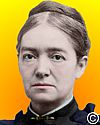
On 31 Aug 1842, Mary Corinna Putnam was born, who after marriage became known as Dr. Mary Putnam Jacobi, an American physician. She was well-respected for her medical abilities and was the first female member of the Academy of Medicine.
Jacobi was awarded Harvard University's Boylston Prize for her 1876 essay, The Question of Rest for Women during Menstruation. In this work, she refuted allegations of the physical limitations of women, such as published by Dr. Edward H. Clarke's in Sex in Education (1873). She supported her position with scientific data including sphygmographic tracings of pulse rate, force, and variations to confirm that a woman maintained vigorous health throughout her monthly cycle.
When she died, among those giving respects in memoriam was Dr William Osler. As you read his In Memoriam: Mary Putnam Jacobi, beyond the customary kindness, you can read into his remarks how the tide had turned for the acceptance and recognition of the contributions that women could and should then be able to give to science and medicine.
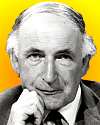
On 31 Aug 1913, Sir Bernard Lovell was born, the English radio astronomer who established and directed the Jodrell Bank Experimental Station, Cheshire, England, with (then) the world's largest steerable radiotelescope. With experience in cosmic ray research, and wartime work on radar, in 1946, he showed that radar echoes could detect optically invisible daytime meteor showers. Lovell gained funding to build the 250-ft-diam. telescope. When completed, it was able to track the first artificial satellite, Sputnik I. Today's book pick is: , by . He gives the first-hand account of the political and scientific interplay that took place in Great Britain during two critical decades in astronomy, from 1960 to 1980. The author describes the development of visionary schemes for radio telescopes of unprecedented size; the events that led to their cancellation; and how astronomers responded with alternate schemes. Any book on such an important telescope as Jodrell Bank by any author would be filled with fascinating information, but this one has the outstanding benefit of being written by the man who knows more about it that anyone, since he played such an important (and difficult) role in bringing the project to fruition.
It is available from Amazon, typically about (As of earlier time of writing - subject to change.)
 | The pursuit of the good and evil are now linked in astronomy as in almost all science. … The fate of human civilization will depend on whether the rockets of the future carry the astronomer’s telescope or a hydrogen bomb. |
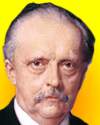 | When young Galileo, then a student at Pisa, noticed one day during divine service a chandelier swinging backwards and forwards, and convinced himself, by counting his pulse, that the duration of the oscillations was independent of the arc through which it moved, who could know that this discovery would eventually put it in our power, by means of the pendulum, to attain an accuracy in the measurement of time till then deemed impossible, and would enable the storm-tossed seaman in the most distant oceans to determine in what degree of longitude he was sailing? |
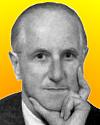 | [The unreactivity of the noble gas elements] belongs to the surest of experimental results. |
| Before you look at today's web page, see if you can answer some of these questions about the events that happened on this day. Some of the names are very familiar. Others will likely stump you. Tickle your curiosity with these questions, then check your answers on today's web page. | |
| Births | |
 | Sir Bernard Lovell, born 31 Aug 1913 is an English radio astronomer who was founder and director (1951-81) of a well-known England astronomical institution. What institution did he found? |
 | Hermann Ludwig Ferdinand von Helmholtz, born 31 Aug 1821, was a German scientist who made fundamental contributions to physiology, optics, electrodynamics, mathematics, and meteorology. He is best known for his statement of one of the fundamental laws of physics. What is this fundamental law? |
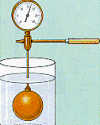 | Guillaume Amontons, born 31 Aug 1663, was a French physicist, who developed the air thermometer - which relies on increase in volume of a gas (rather than a liquid) with temperature - and used it (1702) to measure change in temperature in terms of a proportional change in pressure. He had a disability since childhood, which led him to work on inventions for people with this same disability. What was this disability? |
| Deaths | |
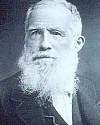 | Sir John Bennet Lawes (1814-1900) was an English agronomist who founded Rothamsted Experimental Station, the oldest agricultural research station in the world. He also founded an industry. What was the industry he founded? |
| Events | |
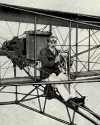 | On 31 Aug 1910, Hammond Curtiss began a biplane trip from Euclid Beach Park, Cleveland, Ohio, to Cedar Point, Sandusky, Ohio covering 70 miles in 78 minutes nonstop. What U.S. first did he establish with his flight? |
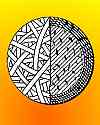 | On 31 Aug 1909, Benjamin Shibe recieved a U.S. patent for a method of making a baseball by winding soft india-rubber strands around a spherical core. (The Shibe Park stadium was named after him as the principal owner of the Philadelphia Athelics team. It later bcame the Connie Mack Stadium.) What material was used for the spherical core of Shibe's patented baseball? |
Fast answers for the previous newsletter for August 30: NOAA • ENIAC • “dirty snowball” • electron • sun.
 If you enjoy this newsletter, the website, or wish to offer encouragement or ideas, please send feedback by using your mail reader Reply button.
If you enjoy this newsletter, the website, or wish to offer encouragement or ideas, please send feedback by using your mail reader Reply button. Your click on a Facebook, StumbleUpon, or other social button on the site webpages is also a welcome sign of appreciation. Thank you for using them.
© This newsletter is copyright 2020 by todayinsci.com. Please respect the Webmaster's wishes and do not put copies online of the Newsletter — or any Today in Science History webpage. (If you already have done so, please remove them. Thank you.) Offline use in education is encouraged such as a printout on a bulletin board, or projected for classroom viewing. Online, descriptive links to our pages are welcomed, as these will provide a reader with the most recent revisions, additions and/or corrections of a webpage. For any other copyright questions, please contact the Webmaster by using your mail reader Reply button.
--
If you do not want to receive any more newsletters, Unsubscribe
To update your preferences and to unsubscribe visit this link
Monday
Newsletter for Monday 30 August.
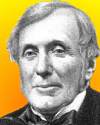
Sir John Rennie was born on 30 Aug 1794, to a father who was himself a great engineer, and that was the same profession for which the young Rennie trained. Their works include some distinctive features in London—three bridges that span the River Thames. One is named the Waterloo Bridge, another after Southwark, and probably the most famous was London Bridge (not to be confused with Tower Bridge). In this chapter on Sir John Rennie from Captains of Industry (1890), you can trace young Rennie through his preparation, travel around Europe to experience the great structures there, and to his achievements. Like his father he became a distinguished engineer of ports and land drainage works. He was consulted about several important early railway schemes. The Royal William Yard, Plymouth was purpose built in 1835 by Sir John Rennie as a naval victualling yard. Around 70 Martello towers were build around the south east shores of England under his direction as defensive positions to protect English shores from French invaders. Are the great engineers of today so versatile?

Two great physicists for today, one was born, the other died on 30 Aug. A biography on either one - or both - deserves to be on your reading list or bookshelf. Today's book pick is: A Force of Nature: The Frontier Genius of Ernest Rutherford (Great Discoveries), by Richard Reeves. Although less well known today, Rutherford was as famous in his lifetime as Einstein became, and his work is equally important to atomic and particle physics. He changed his focus from electromagnetism to the more mysterious field of radioactivity and, through a combination of brilliant insight and indefatigable effort, made fundamental discoveries that earned him a Nobel Prize in 1908. He remained as a powerful influence over nuclear physics until his death in 1937. The author set out to make this biography accessible to the lay person as he traces Rutherford's trajectory from New Zealand to the Cavendish in Cambridge to McGill (in Montreal) to Manchester and beyond. Amazon reviews are all five-star except one (at time of writing).
It is available from Amazon, typically about New from $15.61. Used from $1.60. (As of earlier time of writing - subject to change.)
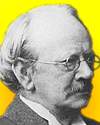 | This example illustrates the differences in the effects which may be produced by research in pure or applied science. A research on the lines of applied science would doubtless have led to improvement and development of the older methods—the research in pure science has given us an entirely new and much more powerful method. In fact, research in applied science leads to reforms, research in pure science leads to revolutions, and revolutions, whether political or industrial, are exceedingly profitable things if you are on the winning side. |
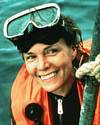 | There’s plenty of water in the universe without life, but nowhere is there life without water. |
 | [It] is not the nature of things for any one man to make a sudden, violent discovery; science goes step by step and every man depends on the work of his predecessors. When you hear of a sudden unexpected discovery—a bolt from the blue—you can always be sure that it has grown up by the influence of one man or another, and it is the mutual influence which makes the enormous possibility of scientific advance. Scientists are not dependent on the ideas of a single man, but on the combined wisdom of thousands of men, all thinking of the same problem and each doing his little bit to add to the great structure of knowledge which is gradually being erected. |
| Before you look at today's web page, see if you can answer some of these questions about the events that happened on this day. Some of the names are very familiar. Others will likely stump you. Tickle your curiosity with these questions, then check your answers on today's web page. | |
| Births | |
 | Sylvia A. Earle, born 30 Aug 1935 is an American oceanographer who is a devout advocate of public education regarding the importance of the oceans as an essential environmental habitat. In 1990, Earle was named the first woman to serve as chief scientist of the U.S. federal agency that conducts underwater research, manages fisheries, and monitors marine spills. What are the initials of this agency? |
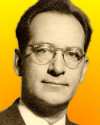 | John W. Mauchly, born 30 Aug 1907, was an American physicist and engineer, coinventor in 1946, with John P. Eckert, of the first general-purpose electronic computer. What are the initials (or acronym) of this computer's name? |
| Deaths | |
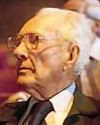 | Fred Whipple, an American astronomer died30 Aug 2004, at the age of 97. In 1950, Whipple suggested a certain structure for comets. His model was confirmed in 1986 when spacecraft flew past Halley's comet. What is the nickname for the comet structure that Whipple suggested? |
 | Sir J(oseph) J(ohn) Thomson (1856-1940) was the English physicist who helped revolutionize the knowledge of atomic structure with his discovery an atomic particle in 1897. What was the particle he discovered? |
| Events | |
 | On 30 Aug 1979, the first recorded occurrance of a comet hitting a certain body in our Solar System occurred (the energy released was about equal to 1 million hydrogen bombs). What body was struck by the comet? |
Fast answers for the previous newsletter for August 29: electric starter • Monopoly • Mt • circumnavigation of the world's polar axis through the North Pole and the South Pole • decade of 1965.
 If you enjoy this newsletter, the website, or wish to offer encouragement or ideas, please send feedback by using your mail reader Reply button.
If you enjoy this newsletter, the website, or wish to offer encouragement or ideas, please send feedback by using your mail reader Reply button. Your click on a Facebook, StumbleUpon, or other social button on the site webpages is also a welcome sign of appreciation. Thank you for using them.
© This newsletter is copyright 2020 by todayinsci.com. Please respect the Webmaster's wishes and do not put copies online of the Newsletter — or any Today in Science History webpage. (If you already have done so, please remove them. Thank you.) Offline use in education is encouraged such as a printout on a bulletin board, or projected for classroom viewing. Online, descriptive links to our pages are welcomed, as these will provide a reader with the most recent revisions, additions and/or corrections of a webpage. For any other copyright questions, please contact the Webmaster by using your mail reader Reply button.
--
If you do not want to receive any more newsletters, Unsubscribe
To update your preferences and to unsubscribe visit this link
Sunday
Newsletter for Sunday 29 August.
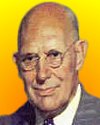
Charles Franklin Kettering, born on 29 Aug 1876, accomplished much in the automobile industry while he was vice president and director of research for General Motors Corp (1920-47). He was an American engineer who held 140 patent.
Weekly, from September 1942 to July 1945, Kettering gave five-minute intermission talks about Science and Invention during the radio broadcasts of the General Motors Symphony of the Air. These radio talks are a fascinating legacy from the mind of a prolific inventor. The obvious anachronisms now add a historical perspective of the war-time period in which they were written.
Among the 59 stories, you should surely find several that interest you, especially those that praise inventions of the era that turned out to be less than beneficial in the long run.
This link takes you to the index pages of these Short Stories of Science and Invention from a General Motors booklet of selected talks. Looking through the index, you can choose from the titles of these stories to find those that interst you. Each one is a quick read.

On 29 Aug 1749, Sir Gilbert Blane was born. He introduce lemon juice into the diet of mariners, and turned the tide of sickness and deaths in the British navy due to scurvy. The value of citrus juices was discover earlier, by James Lind, but it was Blane who, while head of the Navy Medical Board, who put that knowledge to good use.
Scurvy took a terrible toll in the Age of Sail, killing more sailors than were lost in all sea battles combined. In the years before this cure was established, there had been willful ignorance among the royal medical elite, who endorsed ludicrous medical theories based on speculative research while ignoring the life-saving properties of citrus fruit, cost tens of thousands of lives and altered the course of many battles at sea.
Today's book pick is: Scurvy: How a Surgeon, a Mariner, and a Gentlemen Solved the Greatest Medical Mystery of the Age of Sail, by Stephen R. Bown, who provides a well-paced narrative that weaves together the contributions of James Lind (the surgeon), James Cook (the mariner), and Gilbert Blane (the gentleman) worked separately to eliminate the dreaded affliction. The award-winning author provides both historic as well as scientific insights over the span of 60 years in the quest for a cure for the horrendous disease.
Britain's sick sailors were overmatched by France's much larger (though also sick) forces, putting the kibosh on Britain's retention of its 13 American colonies. There is much to learn from this combination of compelling history and classic adventure story.
It is available from Amazon, typically about New from $52.00. Used from $1.47. (As of earlier time of writing - subject to change.)
 | An inventor is simply a fellow who doesn’t take his education too seriously. You see, from the time a person is six years old until he graduates form college he has to take three or four examinations a year. If he flunks once, he is out. But an inventor is almost always failing. He tries and fails maybe a thousand times. It he succeeds once then he’s in. These two things are diametrically opposite. We often say that the biggest job we have is to teach a newly hired employee how to fail intelligently. We have to train him to experiment over and over and to keep on trying and failing until he learns what will work. |
| no image | Science is a first-rate piece of furniture for a man’s upper chamber, if he has common sense on the ground floor. But if a man hasn’t got plenty of good common sense, the more science he has the worse for his patient. |
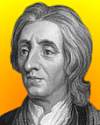 | God having designed man for a sociable creature, furnished him with language, which was to be the great instrument and tie of society. |
| Before you look at today's web page, see if you can answer some of these questions about the events that happened on this day. Some of the names are very familiar. Others will likely stump you. Tickle your curiosity with these questions, then check your answers on today's web page. | |
| Births | |
 | Charles F. Kettering, born 29 Aug 1915, was an American engineer whose inventions were instrumental in developing the modern automobile. What is his best-known invention for the automobile? |
| Deaths | |
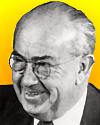 | Charles Darrow, born 29 Aug 1889, was an American inventor who designed a still well-known board game. His patent titled it a "Board Game Apparatus" and described it as “intended primarily to provide a game of barter.” Can you name this game? |
| Events | |
 | On 29 Aug 1982 an atom of a new element was made. It has been given the proposed name of Meitnerium. Physicists at the Heavy Ion Research Laboratory, Darmstadt, West Germany made and identified element 109 by bombing a target of Bi-209 with accelerated nuclei of Fe-58. What is the proposed symbol for this element? |
 | On 29 Aug in 1982, the 52,000-mile “Transglobe” expedition was completed, a first in the circumnavigation of the world What was new about this circumnavigation journey? |
 | On 29 Aug of a certain year, an astronaut in space held a conversation with an aquanaut in Sealab II below the Pacific Ocean In what decade did this take place? |
Fast answers for the previous newsletter for August 28: computerized axial tomography • birds, to study and to paint for his field guides • Bowie = American; Edgeworth David = Australia; Haug = French; Smith = England and Wales • floating bridge • Scientific American • Worcestershire Sauce.
 If you enjoy this newsletter, the website, or wish to offer encouragement or ideas, please send feedback by using your mail reader Reply button.
If you enjoy this newsletter, the website, or wish to offer encouragement or ideas, please send feedback by using your mail reader Reply button. Your click on a Facebook, StumbleUpon, or other social button on the site webpages is also a welcome sign of appreciation. Thank you for using them.
© This newsletter is copyright 2020 by todayinsci.com. Please respect the Webmaster's wishes and do not put copies online of the Newsletter — or any Today in Science History webpage. (If you already have done so, please remove them. Thank you.) Offline use in education is encouraged such as a printout on a bulletin board, or projected for classroom viewing. Online, descriptive links to our pages are welcomed, as these will provide a reader with the most recent revisions, additions and/or corrections of a webpage. For any other copyright questions, please contact the Webmaster by using your mail reader Reply button.
--
If you do not want to receive any more newsletters, Unsubscribe
To update your preferences and to unsubscribe visit this link
Executive Real Estate Business Class
-
"It was like a man with wings. It wasn't like anything you'd see on TV or in a monster movie." ...
About the publisher
Search This Blog
Blog Archive
-
▼
2021
(585)
-
▼
August
(32)
- Newsletter for Tuesday 31 August.
- Newsletter for Monday 30 August.
- Newsletter for Sunday 29 August.
- Newsletter for Saturday 28 August.
- Newsletter for Friday 27 August.
- Newsletter for Thursday 26 August.
- Newsletter for Wednesday 25 August.
- Newsletter for Tuesday 24 August.
- Newsletter for Monday 23 August.
- All-New Tonight: 'The Machines That Built America'
- Newsletter for Sunday 22 August.
- Newsletter for Saturday 21 August.
- Newsletter for Friday 20 August.
- Newsletter for Thursday 19 August.
- Newsletter for Wednesday 18 August.
- Newsletter for Tuesday 17 August.
- Newsletter for Monday 16 August.
- Newsletter for Sunday 15 August.
- Newsletter for Saturday 14 August.
- Newsletter for Friday 13 August.
- Newsletter for Wednesday 11 August.
- Newsletter for Tuesday 10 August.
- Newsletter for Monday 9 August.
- All-New Tonight 9/8c: Telephone Wars
- Newsletter for Sunday 8 August.
- Newsletter for Saturday 7 August.
- Newsletter for Friday 6 August.
- Newsletter for Thursday 5 August.
- Newsletter for Wednesday 4 August.
- Newsletter for Tuesday 3 August.
- Newsletter for Monday 2 August.
- Newsletter for Sunday 1 August.
-
▼
August
(32)
-
Blogroll
-
About
HistoryFact















